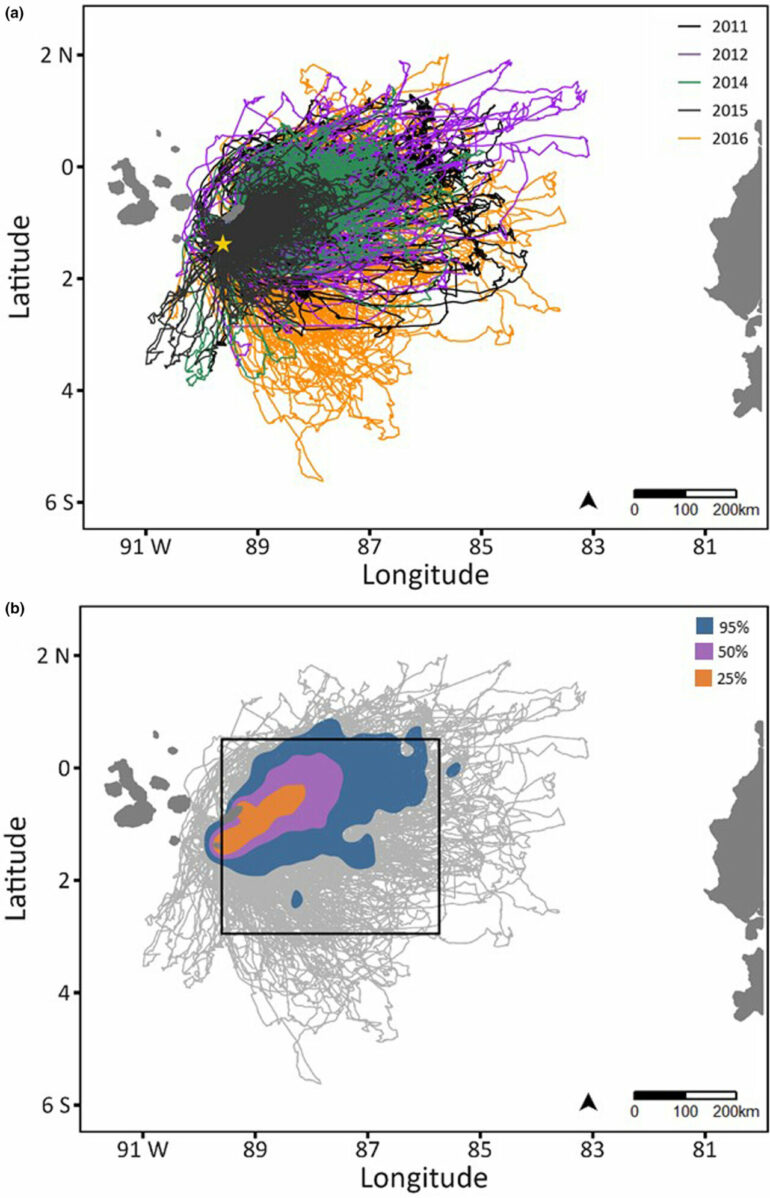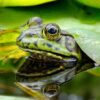Nazca boobies can live to 28 years of age, but in their late teens, their ability to raise chicks declines substantially. Why their breeding drops in old age has plagued Wake Forest University Professor of Biology David Anderson for years. But a new study, published in Ecology and Evolution, may help answer the question, by looking at their ability to forage, or search for and capture food.
The research team, led by Anderson, set out to examine how Nazca boobies’ foraging behavior changes with environmental conditions and age, which may affect how well these birds are able to raise young.
Lead author of the study, and then Wake Forest graduate student, Jenny McKee, attached small GPS loggers to more than 800 birds to track their movements at sea. When the birds returned to the nest after a foraging trip—which could sometimes last a week—the researchers removed the loggers and downloaded the GPS data to see where the birds went in search of food.
“I found it fascinating that we could use these small GPS loggers to spy on their activity,” McKee said. “It felt like Christmas morning each time we hooked up the GPS to the computer, downloaded the data, and saw their tracks. It provided a snapshot into what the birds encountered when they were away from the nest.”
The study is the latest in decades-long research by Anderson, who studies several seabird species, including waved albatross, blue-footed boobies, and Nazca boobies. He and his team have been banding Nazca boobies on Isla Española, a roughly 37-square-mile Galápagos Island, for nearly 40 years.
Environmental conditions, in particular sea surface temperature of the Pacific Ocean, where the boobies forage, affected their foraging performance. When water was warm, like during the 2015-16 El Niño, boobies traveled shorter distances and spent less time foraging and searching for food—suggesting that food was easier to find.
“This was surprising because we often think of El Niño as being really bad for seabirds,” McKee said. But, the result matches up with earlier research by co-author Emily Tompkins, who found that boobies had larger clutches in El Niño-like conditions, though chick survival fares worse later in the 7-8 month-long breeding season.
The researchers also found declines in foraging in old age, particularly for female boobies. When comparing 12-year-old females to 24-year-old females—the oldest birds in the study—the team found that the oldest females traveled 140 miles farther and spent 15 more hours foraging than middle-aged birds.
These results suggest that the time-consuming foraging efforts by old females may contribute to their poor breeding in old age: If old females spend more time foraging, their mate may have to abandon the nest to feed himself, leaving the eggs or chicks vulnerable to predation by Galápagos mockingbirds or hawks.
But, the decades-long data collected from Nazca boobies are still uncovering interesting details about the aging process—a difficult feat in a wild animal. GPS data collected on their foraging later in the breeding season, or data looking at how deep the birds dive, could shed more light on booby aging.
More information:
Jennifer L. McKee et al, Age effects on Nazca booby foraging performance are largely constant across variation in the marine environment: Results from a 5‐year study in Galápagos, Ecology and Evolution (2023). DOI: 10.1002/ece3.10138
Provided by
Wake Forest University
Citation:
New study takes a high-level look at Nazca boobies’ breeding (2023, June 9)



